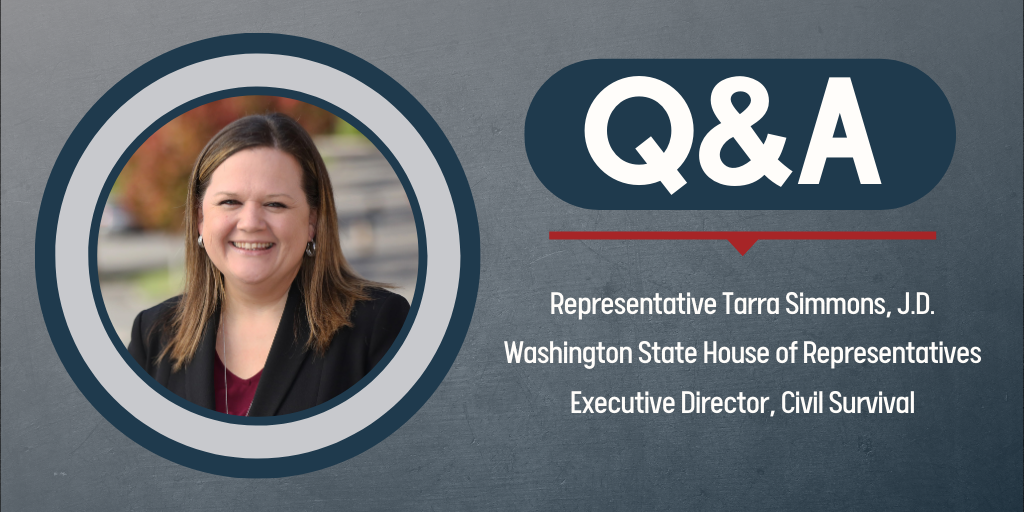In your role as Executive Director of Civil Survival, you help people who were formerly incarcerated by challenging the financial, political, and legal barriers to reentry. What are some barriers specific to people with mental and substance use disorders that you believe must be removed?
The most significant barriers are the constant discrimination of the collateral consequences of a conviction, and the perpetual punishment that creates and hinders an ability to truly stabilize and recover from mental and substance use disorders. We must meet hope with opportunity. When individuals are criminalized for their behavioral health disorder and then denied jobs, housing, and other rights based on the stigma of a criminal record, it is nearly impossible to continue to have the resilience to fight.
How do your own experiences of trauma, substance use, and incarceration guide your work?
My personal history gives me insight into the feelings and experiences of others. While my story is not everyone’s lived experience, I find myself in spaces with others who have similar challenges and have been able to center their stories and mine in solutions.
You fought all the way to the Washington Supreme Court for the right to become an attorney, breaking what you described as the “concrete ceiling.” In what other ways does the “concrete ceiling” need to be broken to allow individuals with justice involvement to reclaim valued roles in their communities?
Currently, I am also running for public office to break another “concrete ceiling.” [Editor’s note: Ms. Simmons won her election in November 2020 and is the first person with a past felony conviction to be elected to the Washington State Legislature.] We need to see individuals with former justice involvement breaking these barriers everywhere: in the corporate, government, and nonprofit worlds, in health care, and in education. I am not aware of, for example, formerly incarcerated physicians. Suppose we ensure people with former justice-involvement and histories of incarceration are able to hold all professional and leadership opportunities. We would then reach more vulnerable populations through empathetic care and give hope to others during their darkest times.
To others experiencing the effects of trauma and substance use disorders, what message do you hope they will take away from your story of recovery?
To never give up. Do an exercise where you imagine if you had no limitations, what would you want your life to look like? What kind of contribution would you want to make to the world and/or what profession would you hold? Then, make a plan to achieve that. If it includes a barrier based on a criminal record, reach out to experts in your state to inquire about the process for an expungement, vacation, dismissal, or pardon.
You believe those “closest to the problem are closest to the solution.” How can criminal justice stakeholders better engage with people with lived experience to shape programs and services that better serve individuals with mental and substance use disorders?
Ask to be invited to places where individuals with lived experience receive services or organize in their communities. Then, ask if you could attend a listening session. People who are directly impacted are not necessarily policy experts, but they can tell you the problems and solutions that would be most helpful.
Like what you’ve read? Sign up to receive the monthly GAINS eNews!


